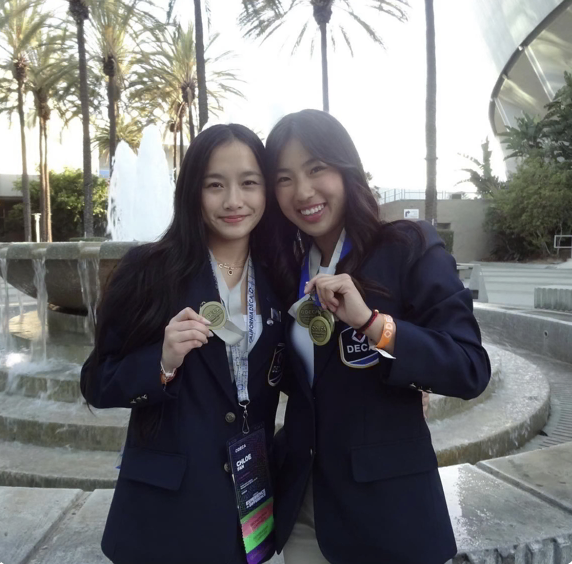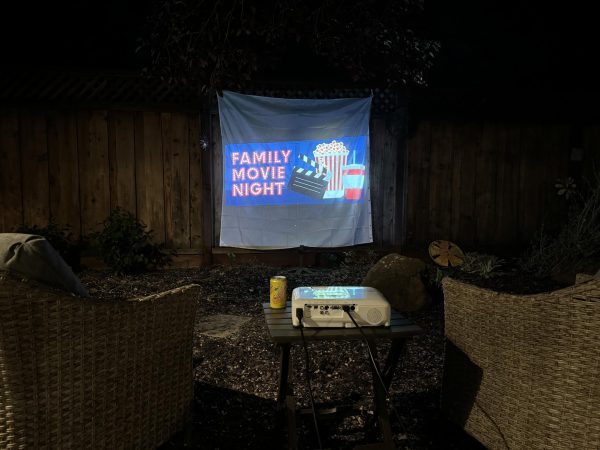ASL in Depth— Deaf History Month
Communication and understanding. That’s the main focus of American Sign Language. It is an amazing skill that reaches and connects many people together, and with March being Deaf History Month, the ASL classes at Amador learn about and reflect on how the portrayal of the deaf community has changed over the years.
“It’s just all about representation, and having deaf people’s representation and their language being seen in the community, which is happening more and more. To spread awareness of this, we teach our students about deaf culture and show examples of it. One thing we did last month to spotlight that was we showed the Superbowl half-time show with the ASL deaf performers who were a part of that show,” said Shannon Heller, the ASL 1-2 teacher at Amador.
There has been a significant increase in the amount of involvement from the students over the years in the ASL department. A department that started in 2001 with just one teacher has now evolved into two solid, well-organized classes.
“I would absolutely recommend this class to other students because it’s just such a valuable class. It teaches you so much about the different types of people in our world. I’ve gained a lot more respect for the people who know ASL, who can sign very fluently, because it’s pretty tough to learn and just having that skill is great. It’s something you should look up to people for,” said Vaishali Sukumar (‘23).
ASL is not only a class that raises awareness about the deaf community, it also helps build a strong community within the students. Vaishali Sukumar (‘23) is one of the many who chose to take this class for its environment and value.
“I really wanted to find another way to connect with students who aren’t able to speak verbally because there are so many communities out there that are under-represented, and just to have that opportunity and experience to learn about different people, different communities that are extremely important and need to be normalized. Just having that opportunity is really good for me, so I took it,” said Sukumar (‘23).
Compared to other language classes like French or Spanish, the ASL department concentrates on classwork over a lot of homework so that students can practice and memorize different signs. However, the overall format of how lessons are structured allow the students and teachers to really connect through the language.
“ASL classes are unique and different from normal language classes because you don’t really talk… For homework, we basically just practice signing by using study guides, and for vocab tests, we watch the teacher as she signs and then write down what she had signed. Sometimes, we also have expressive tests in which we have to write a script and then memorize it and sign it to the teacher to show how fluent we are with ASL,” said Irayna Lin (‘24).
By taking ASL classes, students have both learned about deaf culture and become involved in the deaf community. Pre-Covid, the ASL department often planned trips to events such as the Deaf Expo to encourage their students to engage with the deaf community, and now, students like Kaitlin Hekler seek out more opportunities to participate in deaf events themselves.
“I went to a Hanukkah deaf event once with my family members and other deaf people— it was very interesting because it was super quiet and I was one of three hearing people. Nobody was speaking, which made it a really unique and interesting experience because the conversations were fully expressed through sign language,” said Kaitlin Hekler (‘23).
Just as students feel excited about learning sign language, the ASL teachers also feel delighted and proud when they hear about how their students are able to incorporate the skill into their day-to-day lives.
“I love teaching ASL. I have so much fun with my students, seeing the excitement that they get when they are able to take the vocabulary and put it into a sentence. Mrs. Heller and I have had similar experiences with students coming up to us and saying ‘oh my gosh, at my work, I was able to help this person’— and just seeing the joy and the fun that the students are having makes me have more fun in class,” said Ms. Britto.
Your donation will support the student journalists in the AVJournalism program. Your contribution will allow us to purchase equipment and cover our annual website hosting costs.











LF • Jul 1, 2022 at 11:05 pm
As an ASL user myself(I am hearing) I really appreciate this post. 🙂